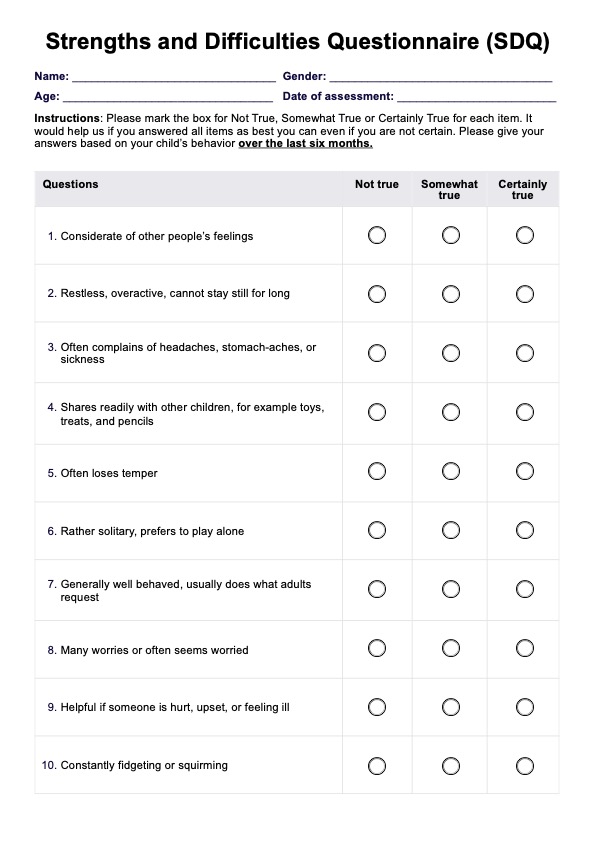The SDQ can be administered by parents, teachers, or healthcare professionals who have been trained in its administration. The questionnaire can be completed either online or on paper. The person completing the questionnaire should read each question and check the appropriate box indicating how much they agree or disagree with each statement.

Strengths and Difficulties Questionnaire
Discover the Strengths and Difficulties Questionnaire (SDQ) and how to use it. Get a free printable example to assess emotional and behavioral problems in children and adolescents.
Strengths and Difficulties Questionnaire Template
Commonly asked questions
The SDQ assesses children's abilities and challenges across five subscales: Emotional Symptoms, Conduct Problems, Hyperactivity/Inattention, Peer Relationship Problems, and Prosocial Behavior.
The SDQ results can be interpreted by adding the subscale and overall scores. Normal, borderline, and abnormal/high-risk scores are available. Higher Emotional Symptoms, Conduct Problems, and Hyperactivity/Inattention subscale scores indicate more difficulties, whereas higher Peer Relationship Problems and Prosocial Behavior subscale scores indicate more strengths.
EHR and practice management software
Get started for free
*No credit card required
Free
$0/usd
Unlimited clients
Telehealth
1GB of storage
Client portal text
Automated billing and online payments











